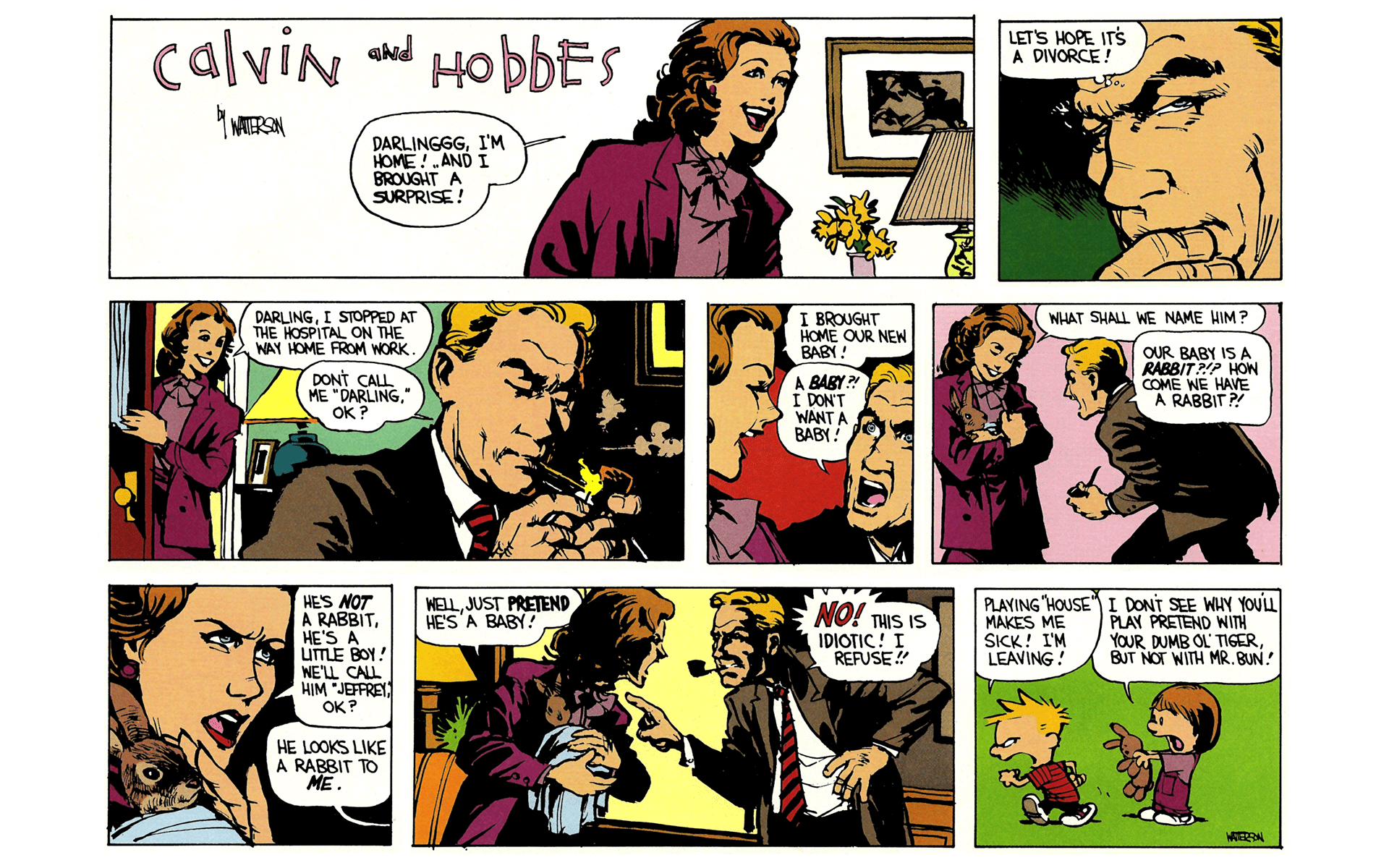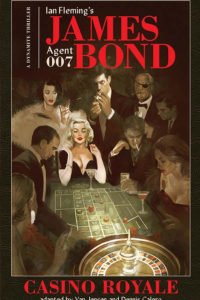Writer/Artist : Bill Watterson
Publisher : Andrews McMeel Publishing
Year : 2012 (softcover)
It can be said that there is something about Calvin & Hobbes that transcends the limits of literature, such limits being the confinements which create a wall between what is on the page and what is in our minds. This is not to say that Mr Bill Watterson’s strips are the only example of such significance, rather that events of such kind are few and far between.
The word “event” is not chosen haphazardly, the product of an indiscriminate use of any English dictionary, rather as a way to render the magnificence underlying the reading of the strips which narrate the life of a boy whose imagination brings to life his stuffed tiger.

To be able to read these strips means we can delve deeper into the absolute shallowness of profundity; as chaotic and absurd as this statement might sound at first, it is here that we find the enduring strength that act as a pillar – not just for now, but forever and ever – upon which Calvin & Hobbes manages to stand above, well above the peak of excellence.
The strips, in fact, can either be read as the perfect example of divertissement, an innocuous glimpse into the mind of a six-year-old who compensates for his terrible marks at school with an abundance of imagination, or as a comment on humanity and the way we change from being young – and, perhaps, innocent even in our attempts at being mischievous – to becoming adults, losing along the way our ability to dream and turn inanimate objects into real-life creatures who not only speak, but also manage to make us ponder as they inadvertently produce philosophical questions.
/cdn.vox-cdn.com/uploads/chorus_asset/file/19964110/calvin_hobbes_gravity_grabbing_plane_comic_strip.jpg)
It is for this reason that we find the above dichotomy to be more than meets the eye: the game played by the two sides of the comic strip, one being its innocent superficiality and the other its intellectual depth, is an ongoing relationship that makes us appreciate the final product on both levels, with the certainty that the more we grow up, the easier it will be to make the two merge.
Calvin & Hobbes is therefore one of the most brilliant examples of what the medium can do, especially when constrained by the structure of the comic strip (a few panels that must contain a clear story and a punchline). The brilliance that is manifested and carried out on the structural level finds its counterbalance in the layers of fruition the strip allows for the reader to discover from its reading, a fruition that does not stop at face value and, yet, manages to open itself up on the page so to become the best example of what clever entertainment means.
We enjoy reading the strips not simply because they make us think, but also because they are funny, leading us to laughing in a way that goes beyond the simple stratum of finding something amusing per se: it is not just that Calvin is an interesting character, he actually embodies an archetype we all know either because we recognize ourselves in him or because we spot some elements we find in the people that surround – or surrounded – us.
There seems to be no denying, then, that Calvin & Hobbes manages to leave a mark on our conscience both as persons and as readers. The perfect instance – luckily, among many others – of what comic strips can produce, it also incorporates those moments that make our mind light up, as if an underlying (hidden?) intellectual treasure had finally been unearthed.

We turn page after page as if it were impossible for us to stop, as the dialogues and the art entice us into a spiral of wanting more. Calvin, forever stuck in his 6-year-old form, and Hobbes, which can either be a real thinking creature or just the figment of Calvin’s imagination (must we really know the answer to this question, after all?) never learn their lessons when lessons are to be learned, and keep fighting when chaos ensues and the two find each other on different sides (when deciding who the winner of a made-up game is, for example).
Theirs is a statement about the importance of imagination, of course, but also about the necessity of thinking, of pondering, of the serendipitous moment when all of a sudden, in the middle of the beauty of shallowness, we realize we are saying something so deep it makes our minds tremble in awe (but let’s not take ourselves too seriously), and of living adventures that no adult can experience anymore but through the avatars of two characters in a comic strip.


